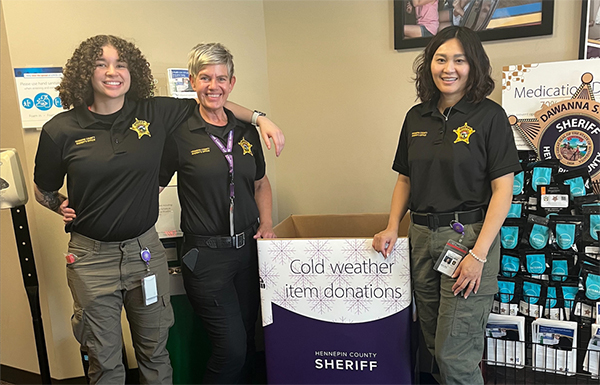Perhaps you’ve bought a few pre-owned items before but never explored all of the opportunities out there to save money or help reduce waste and your overall impact on the environment. Ready to take your buying used goods game to a new level but aren’t sure where to begin? Start here with this buying used goods guide. In it we’ll cover:
- How to get started
- Benefits of buying used goods
- Buying used:
- Clothes
- Books
- And beyond!
Buying used goods: getting started
Create a shopping list and set a budget
One of the major benefits of buying used goods is cost savings. However, just because you’ll be saving a lot of money per item doesn’t mean you should increase the amount you’re buying. By doing that, your savings can end up being a wash. We suggest creating a shopping list and setting a budget (the easy part) and then sticking to it (the not so easy part). Just as you would when shopping for new items, know what you should or shouldn’t be spending and follow that.
A common misconception surrounding shopping at thrift stores, consignment shops, and the like is that it’s hard to find what you want if you’re searching for something specific. First off, start by making a list, just as you would when shopping for new items. And remember, the store employees are there to help, so don’t be afraid to ask for their assistance. For example, maybe the item you’re looking for is newly arrived, and hasn’t been brought out front yet. An employee may be able to retrieve it and bring your search to a speedy end.
Tip: As you think of things you need, keep a running list of those items that you know are apt to be found at thrift or other secondhand stores – things like coffee makers or Halloween costumes. Then just be sure to take that list with you when you go thrift shopping.
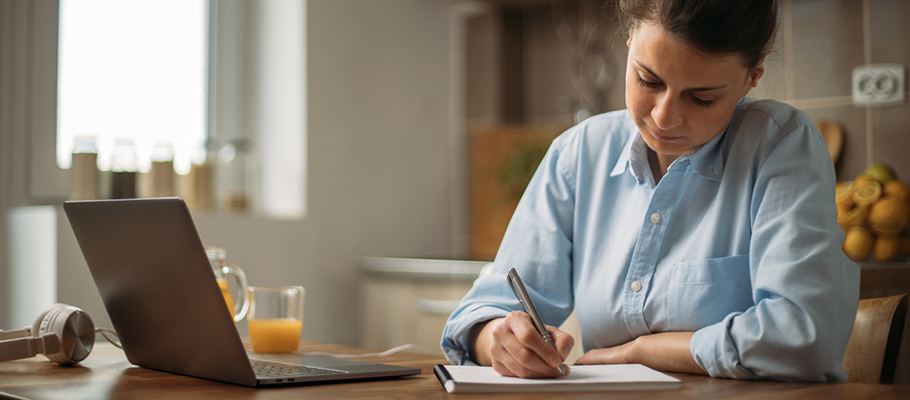
Research local retailers
If you’ve never been to a secondhand store, we suggest doing a little research before you start. Not all secondhand stores are the same or carry the same type of inventory. A vintage shop, for example, will carry (you guessed it) more vintage items, while some antique shops specialize in more high-end items, and a thrift or consignment shop may carry a variety of used things like clothes, furniture, and decor, etc. Maybe you’re looking for a store that takes donations or buys and sells used items. You may even be shopping online to buy used goods. That’s one of the beauties of buying used goods – there are a lot of options.
Keep an open mind
Becoming a seasoned secondhand shopper won’t happen overnight, so give yourself a little grace. Half the fun of shopping thrift, vintage and more is the thrill of the hunt. Buying used goods isn’t like buying at the big box stores, which is great! But it can take some getting used to. So try to be open-minded as you navigate the newness of buying used goods – and have fun!
Related resources: 9 Frequently asked questions for safe, smart and savvy thrift shopping
Benefits of Buying Used Goods
Besides the obvious benefit of saving money, buying used goods affords you even bigger, long-lasting benefits, such as:
Preserving natural resources and reducing pollution
An enormous benefit of buying used goods is that your action reduces the demand for unneeded new goods. By reducing production levels, we preserve not only the energy and materials needed for manufacturing, but also for packaging, transporting, marketing and ultimately disposing of those goods. Bottom line: The best way to reduce waste is not to create it in the first place. The items you’re buying used were already manufactured, the resources spent and pollution generated. In fact, you can actually help prevent pollution by reducing the need to harvest new materials by buying used.
Remember, every product that’s manufactured is responsible for the depletion of a certain amount of natural resources. For example: clear cutting forests, extracting oil, mining metals, burning gas, or farming cotton. The list goes on and on.
No packaging
Another benefit to buying used goods: You typically can avoid all the excess, unnecessary packaging of new goods. Not only is less packaging better for the environment, but it’s also less hassle on you to have to open and dispose of the materials.
When you buy new products, they usually have some sort of packaging – such as plastic hard casing, shrink wrap, a cardboard box, packing peanuts, etc. If it seems wasteful to you, it’s because it is. It eats up a lot of resources to manufacture and most of it can’t be recycled and ends up in the trash. Buying used goods reduces waste by eliminating the need for packaging on your “new to you” items.
Supporting local businesses
When you opt to shop at your local thrift store, consignment shop, etc., you’re helping support local businesses instead of spending your dollars at big box stores. The money you spend gets invested back into the local economy.
Find unique items
Between vintage clothing, one-of-a-kind pieces, and hard-to-find items, when you buy used goods and shop at thrift stores, vintage shops, and the like, you can find unique items you won’t find at a chain store.
Buy Used Clothing
On average, Americans purchase over 64 garments per person per year. And 80% of those items end up in the trash! Not only is that a drain on your wallet, but it’s also a drain on the environment. The amount of waste that can be eliminated by buying used is huge. But how do you successfully buy used clothes, especially if you’re used to buying new?
Create a list and set a budget
As we mentioned above, a general rule of thumb, whether you’re shopping for used clothing, books, or beyond, is to create a list and set a budget. It can be easy to see the low prices of secondhand clothes and spend more than you intended. Go in with a plan in mind and stick to it. One of the many benefits of buying used is that your dollars usually go a lot further, so while you may have to stick to a budget, you’re still getting way more bang for your buck than if you were buying brand new clothes.
Examine each item thoroughly
You will find quality pieces when you shop used, but you will also encounter pieces that have minor imperfections. Take the time to examine each item carefully before you purchase. You don’t want to get home only to discover that an item has a hole or a stain you don’t think you can get out. Many secondhand stores won’t allow returns, so be sure you know the store’s policies before purchasing. They might provide exchanges or in-store credit instead, so keep that in mind when examining used items.
Take your time
Half the fun of shopping used comes from the thrill of the hunt and finding great pieces at low prices. But it can take a little digging to find those pieces, so take your time. Browse several stores, and as we mentioned above, look over used items before you purchase.
If you don’t like it in the store, you won’t like it at home
This is a rule of thumb whether you’re buying new or used. If you don’t like it in the store, don’t buy it. You’re not going to like it any better when you get home, which means it will just sit in your closet, taking up space.
Wash clothes when you get home
Most items are washed before they are donated, but it’s always a good idea to rewash items when you get them home, especially since others will have touched them or tried them on while browsing in the shops.
Have fun
You can find some really unique clothing items when shopping secondhand, and while they’re not brand new, they’re new to you! Enjoy the experience and have a little fun!
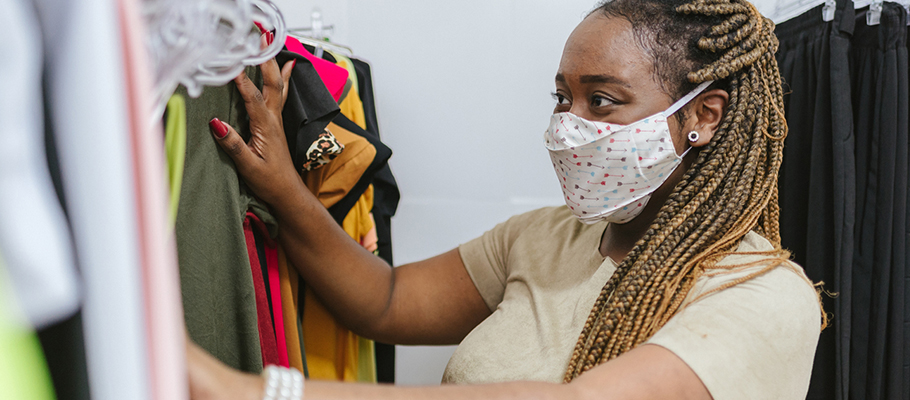
Buying Used Books
The U.S. cuts down over 20 million trees per year to produce new books. The reality is, most people only read a book once, maybe twice. While we get that it can be tempting to run out and buy that brand new New York Times bestseller the minute it hits the shelves, what’s on those pages won’t change a few months from now, but the price will when you wait and buy it used. Beyond just the cost savings, buying used books is a great option because:
- You can help reduce the number of trees cut down
- It can save you money when buying your next great read
- You may be able to find rare editions that are no longer in print
- If you end up not liking the book, at least you didn’t spend a lot of money on it
- Many used bookstores buy your books from you for cash or store credit so you can buy more from their store
- The books you buy will have a history
- Cheaper prices mean you have more money to buy more books
- If you are a collector, you can add more books to your collection for less money
Borrowing books from your local library is also a great option, but they might not have every book you’re looking for, or they might have a long waitlist before you can borrow it.
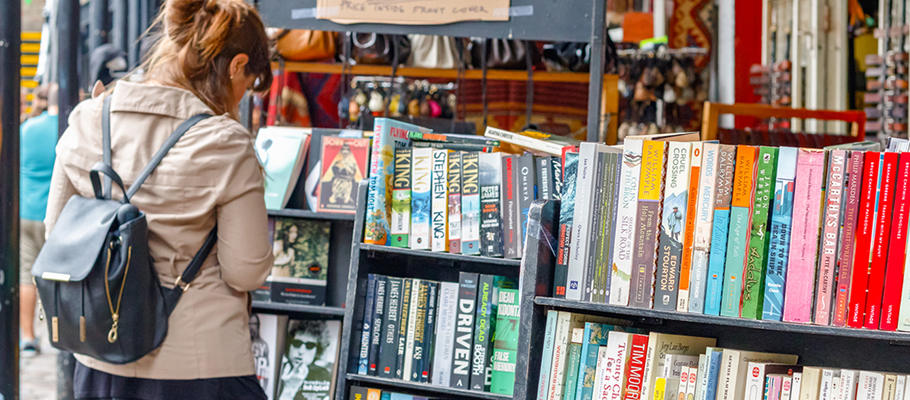
Buying Used Furniture
Furniture is one of the biggest accessories in your house, and what you buy helps make that house a home. But it shouldn’t have to cost you and our environment an arm and a leg to get that “home” feeling. Buying used furniture is a great alternative to having to save up to buy new pieces and it’s also better for the environment. Here are a few tips and suggestions when shopping for used furniture.
Try before you buy used
Be sure to test out the furniture before you make your final decision, just as you would a new piece of furniture. Sit in chairs or on couches, open drawers, turn over cushions, and lean on tables. Be sure to carefully examine each piece. There may be some imperfections that can be fixed, but make sure if there are damages that you or someone else can fix them properly.
Use your imagination
Sometimes all you need is a little imagination for the piece you find to become the find of your dreams. Secondhand furniture might have good “bones” and need just a simple refresh. Before you pass over a used piece because you don’t like the fabric or hardware, try picturing it reupholstered or with some different drawer pulls.
Check for recalls
Sometimes furniture is recalled for safety, fall hazards, lead paint, flammability or other reasons. Look for tags and labels to be able to identify the piece and double-check to see if the item has been recalled before you purchase. For safety recalls, go to the Consumer Product Safety Commission’s web site and use the search bar to learn if your piece is listed.
Make sure to measure
While shopping for used furniture, you may find a piece that you love, but aren’t sure if it will fit in your home. It’s important to have a sense of how much space you have to work with. Take actual measurements before you venture out shopping and bring the tape measure with you to measure the used piece you are interested in. The last thing you want is to find a great piece, bring it home and find that it doesn’t work in your space.
Bring the big vehicle
Along the same lines of knowing how much space you have to work with, bring a vehicle large enough to transport your purchase. Even if you’re just “browsing,” be prepared to take home your furniture. While some stores may hold merchandise for a few days, others require you to take it home the same day. Don’t miss out on a must-have piece.
Don’t learn to love it
We said it with clothes, and we’ll say it with furniture and basically any item: If you don’t love it in the store, you probably won’t magically love it once you get it home. Buyer’s remorse is a little tougher pill to swallow with furniture. If you don’t love it, aren’t sure how to make it fit in your space or aren’t up to the DIY project, let it go. Leave it for someone else who will truly love and appreciate it. Your forever furniture is out there. Keep looking.
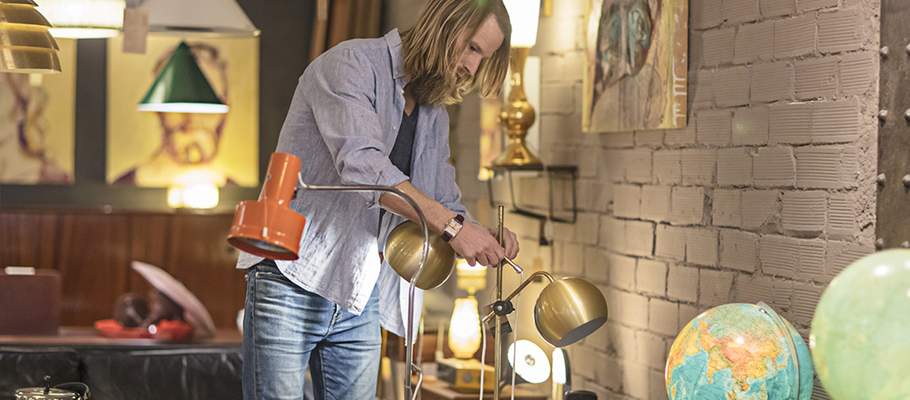
Buying Used Bikes
Unless you’re an avid biker already, we suggest checking out your used options first. Many people buy bikes with every intention of using them for fun and exercise, only to have them sit in the garage, unused. With the average new road bike costing between $350-$700, buying used is a great alternative. But what should you look at?
Type and size
Before you start your search, know what kind of bike you’re looking for. There are a lot of different types and it makes a difference. Do you want a road, commuter, or mountain bike? Do you know your size? If the bike is for your kid, what size do they need? These are important questions to answer before you buy any bike.
For help finding your correct bike size, click here.
For help finding the correct size for your child, click here.
Framework
Make sure to avoid rusty frames and those with dents and cracks on the tubes. A few chips and scrapes in the paint are usually okay, but a damaged frame or fork makes a used bike virtually unusable since this is the one part of the bike that can’t be replaced.
Wheels and Tires
Wheels and tires are probably the second most expensive parts of the bike, which is why it’s important to make sure they’re in good condition. By lifting each wheel off the ground and watching it spin, you can check the operability of the wheels. Be cautious of any drastic side-to-side movement, but a millimeter or two of wobble can be easily fixed.
When assessing tires, check for bulges, cracks, and gashes – all indicators for replacement. While tires aren’t as expensive to replace as wheels, it’s smart to double-check.
Brakes
To check the brakes, squeeze the brake calipers together with your hand. The brake pads should make contact with the brake track pretty easily and spring back to their original position without a ton of effort.
Tip: Don’t just squeeze the brake levers at the front since the problem could be with the brake cables themselves.
Price
Once you find a used bike you like and that gets the all-clear in the areas above, check to see what that bike retails for to make sure you’re getting a good deal.
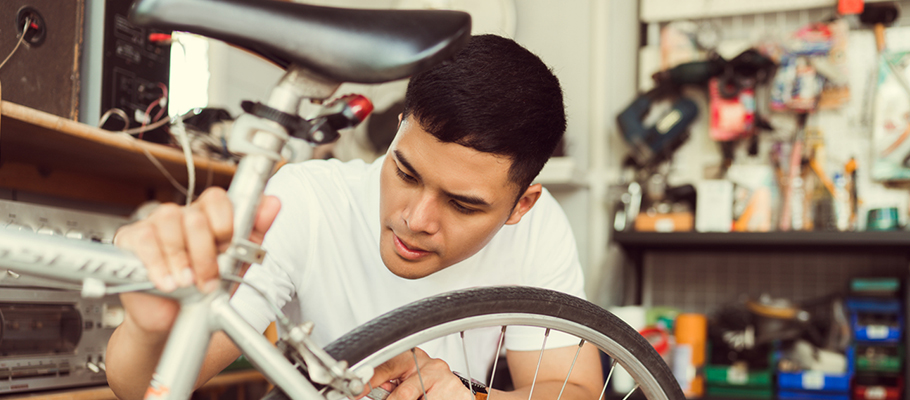
Buying Used Tools
From hand tools to power tools, whether you’re starting your workshop or adding to it, you can conserve cash and lessen your environmental impact by buying tools used. In fact, you can often save hundreds of dollars on used tools that have years of life left in them. You may even find a set that was purchased originally for a one-time project and never used again. Here are tips for buying used tools.
Tip: If you just need a tool or tools for a one-time project, renting from a hardware store, home improvement center, or rental center is a great option.
Research
Before you run out and buy any tools, new or used, we recommend doing some research first. Start by figuring out what it is you want or need and what it would cost to buy new. Especially if you’re buying power tools that are more expensive, you want to make sure you’re getting a good deal buying used. It’s also a smart idea to know what features you need out of the tools so you know what you’re looking for when you begin shopping for either used hand or power tools.
Test it
You can often purchase hand tools and other non-power tools without ever actually testing or touching them, as you’ll be able to see if there’s too much wear, rust, or damage on them. Some used hand tools even come with transferable lifetime warranties. For power tools, to ensure functionality and safety, we recommend you try them out before you purchase.
When testing, be sure to look and listen carefully. If the motor sounds good and is running smoothly, it’s most likely okay, but if you smell something odd or hear the motor making any sort of sounds like slipping, grinding, or parts rubbing together, you might want to pass on it. Those are all signs that the used tool likely needs to be repaired or replaced.
Check the power cords
This is an important step when buying used power tools. There shouldn’t be any exposed wires. If there are, the tool is not safe. The same can be said if the cord is loose, as that can cause a short, in which case the tool won’t work and may even be a fire hazard.
If you’re buying something like a used cordless drill, just make sure it includes a battery or that the seller at least has a battery you can borrow to test the tool.
Don’t forget to check that the tool has the original number of prongs and that they’re intact. If any are bent or missing, it’s best not to buy.
Safety features
If you’re looking at heavy-duty tools that require safety features, be sure that those features are working properly. It’s important that the tool’s guards and/or safety features work as they should. If not, it’s a dangerous investment.
Rental
Need a tool for a one-time project? Renting from a hardware store, home improvement center or rental center is a great option to buying anything at all!
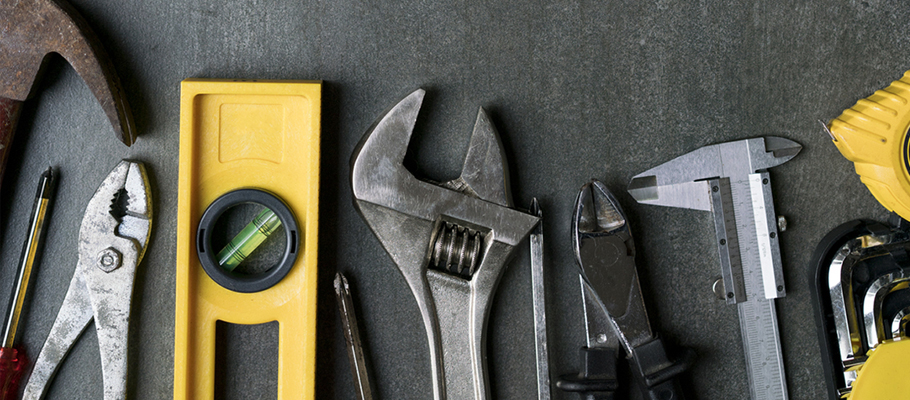
Ready to Begin?
Now that you know how to get started, the benefits of buying used goods, and what to look for when shopping for used clothing, books, and all things beyond, we invite you to take the next step and visit used goods retailers in your neighborhood. You’ll save money, support local businesses, and help save the planet.
Need help finding where you can buy, sell, rent or donate used items?
You can use our Choose to Reuse Shopping Tool for suggestions.
